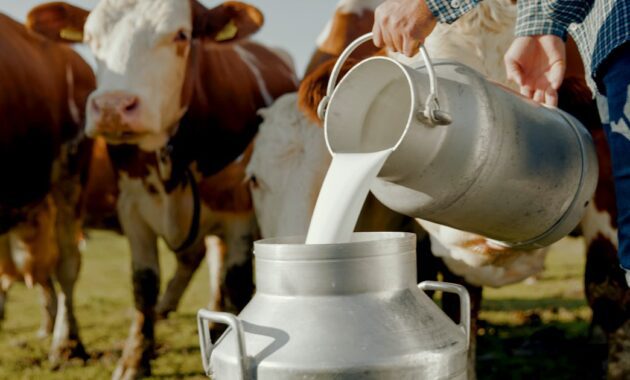If you’ve been on the internet for any amount of time over the past decade or so, then you’ve heard someone extol the virtues of raw milk. “It’s healthier!” they say “It’s great for your gut microbiome and helps with asthma and allergies!” “Pasturizing milk kills the nutrients!” And you’ve also probably seen people counter that claim by saying, actually, raw milk is one of the most common causes of foodborne illness.
Recently the Florida Department of Health reported that 21 people, including six children under the age of 10, have been sickened by Campylobacter and Shiga toxin-producing E. coli (STEC) — which can cause kidney failure, among other issues — after drinking raw milk from a particular farm in the state. Seven have been hospitalized and two have encountered “severe complications.”
Florida is one of only a handful of states that do not allow the sale of raw milk for human consumption. However, it is not illegal to consume raw milk in the state and it is legal to sell it as pet food, which is a handy loophole for raw milk enthusiasts.
In all the contradictory claims it can be hard to get a straight answer about the risks and/or benefits of raw milk, especially as it has become a kind of identity marker in right-wing politics. Here’s what we know…
What is raw milk?
Raw milk is milk that comes direct from the cow to you. It is often bought directly from a farmer, though there are 14 states that allow retail sale of raw dairy. This differs from most milk sold in the U.S. which is minimally processed through a process called pasteurization.
In pasteurization, milk is heated in order to kill bacteria and other pathogens (more on that in a bit). There are a few ways this can be done, but in the U.S. the most common method of pasteurization is High Temperature Short Time (HTST). The milk is brought up to about 161° — well below boiling point — for at least 15 seconds before being rapidly cooled. Other, less common methods work basically the same way but the time and temperature vary.
This quick heating not only serves to kill bacteria, but extends the shelf-life of the product as a nifty byproduct.
Why do people want to drink raw milk?
Health claims about the benefits of unpasteurized milk are rampant online. Some claim raw dairy can cure lactose intolerance. Others tout the benefits of unpasteurized milk for treating allergies, asthma, and promoting gut health and overall immunity. Others make more generalized claims that raw milk is more nutritionally beneficial and that pasteurization renders milk less healthy overall.
All of these claims have been debunked time and time again, as established by the Food and Drug Administration. There is no evidence that raw milk is any healthier than pasteurized milk. Moreover, the risks associated with consuming raw milk are robust and well-established.
Why is raw milk dangerous?
Raw milk has been known to contain Campylobacter, Cryptosporidium, E. coli, Listeria, Brucella, Salmonella and even Avian flu and Bovine tuberculosis. These pathogens can cause a number of symptoms ranging from diarrhea to death.
So why are these germs prevalent in raw milk? It comes down to the health of the cows and the conditions of the farm. A cow with infected udder tissues, such as mastitis causing bacteria (yes, cows get mastitis, too!) can pass that on to the milk. Bacteria or other germs present on milking equipment can also make its way into the product. Lastly, and bluntly: even a well maintained farm is covered in poo.
From the cow’s poo to manure fertilizing the fields where they graze to the soil they traipse through, there’s plenty of opportunity for bacteria and other unsavory particles to wind up on the cow’s udder, or even just find its way into the milk.
For farmers who want to sell raw milk, there are steps they can take to mitigate those risks… but never entirely eliminate them. For that, you’d need to pasteurize the milk.
What will happen if you drink raw milk?
Frankly? Statistically. Nothing. You’ll probably be fine. But the same can be said of a game of Russian roulette: you’ll probably be fine, but the risk is ever-present. This is particularly true if you’re a young child, pregnant, or over 65.
Raw dairy products are top sources of foodborne illness worldwide, including in the U.S. Considering most people don’t consume raw dairy in the first place, this only serves to highlight how common it can be to drink contaminated milk if it hasn’t been pasteurized.
TL;DR: There’s no good reason to drink raw milk or avoid pasteurized milk
Considering the touted benefits of raw milk have not been substantiated while the assorted risks and dangers are well-established, health experts agree it’s best to avoid it all together.
Disclaimer: This content was automatically imported from a third-party source via RSS feed. The original source is: https://www.scarymommy.com/lifestyle/in-florida-raw-milk-has-sickened-21-people-heres-what-you-need-to-know. xn--babytilbehr-pgb.com does not claim ownership of this content. All rights remain with the original publisher.
